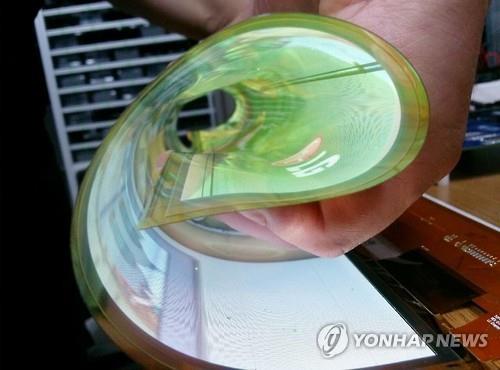-
Tips for becoming a good boxer - November 6, 2020
-
7 expert tips for making your hens night a memorable one - November 6, 2020
-
5 reasons to host your Christmas party on a cruise boat - November 6, 2020
-
What to do when you’re charged with a crime - November 6, 2020
-
Should you get one or multiple dogs? Here’s all you need to know - November 3, 2020
-
A Guide: How to Build Your Very Own Magic Mirror - February 14, 2019
-
Our Top Inspirational Baseball Stars - November 24, 2018
-
Five Tech Tools That Will Help You Turn Your Blog into a Business - November 24, 2018
-
How to Indulge on Vacation without Expanding Your Waist - November 9, 2018
-
5 Strategies for Businesses to Appeal to Today’s Increasingly Mobile-Crazed Customers - November 9, 2018
LG Display invests in flexible OLED
But with a near $1 billion investment from a company like LG, we should see the price of flexible OLED panels drop considerably over the next few years.
Advertisement
LG Display and Samsung Electronics Co Ltd unit Samsung Display are the only firms in the industry capable of mass-producing OLED screens, which are physically more flexible and consume less power than current LCDs.
LG Display, the world’s largest display-maker by sales, has invested more than 14 trillion won into the Gumi plant since 1995.
Its latest investment will begin in the third quarter, with the plant scheduled to start mass production of small and mid-sized OLED screens in the first half of 2017.
The 6th Generation line is able to produce more than 200 cuts of a 5.5-inch product from a single substrate, which is almost four times the production efficiency of a conventional 4.5th Generation line, which uses 730mm x 920mm substrate sheets.
In addition, LG Display signed a MOU on OLED investment and administrative support with the Gyeongbuk Province and Gumi City governments on July 23, with the company having been promised to receive administrative service support from the local authorities.
In a regulatory filing on Thursday, LG Display posted second-quarter earnings of 6.7 trillion won, up 12 percent from the same period past year.
The South Korean firm said it will also use the plant to address future applications such as foldable screens and automotive displays.
OLEDs are a big thing right now as smartphones, TVs and Apple Watch itself use this sort of flexible display to integrate it in their most advanced devices.
Advertisement
The source said it was likely that the first flexible iPhone may be introduced in 2018, “as Apple’s top-tier display suppliers are working on it”.




























